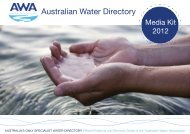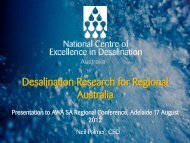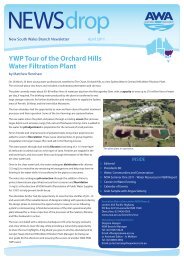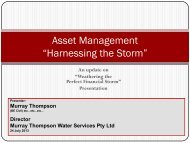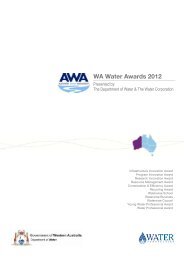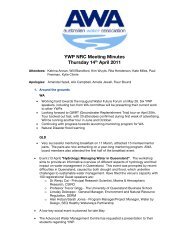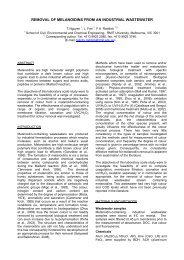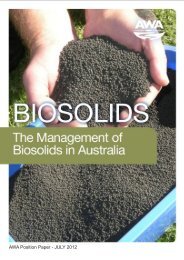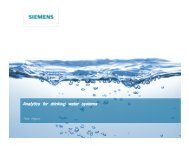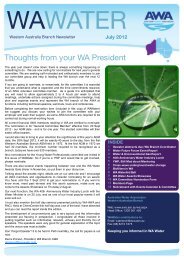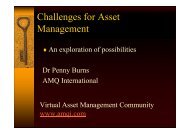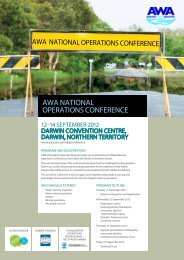• Demand for motor skills is projected to fall, whiledemand for cognitive and interactive skills is projected togrow.• As the workforce ages and becomes moreexperienced and qualified, the supply of vocational skillswill increase in availability, particularly in white-collarskills.• Where jobs are becoming more casual withless training, formal VET training is likely to grow inimportance.• As jobs become increasingly complex, workers arerequired to move up the hierarchy of cognitive andinteractive skills – a ‘skill deepening’ process.• VET should therefore re-focus on middle and higherlevel skills training but continue to supply lower-leveltraining to those who are disadvantaged and/or havefollowed unconventional life paths.• Training packages and curriculum design need tofocus on worker functions within the cognitive andinteractive skill sets to accommodate this projectedincrease in demand.• By employing market-based training models andcommunity partnerships, VET can respond to evolvingtraining requirements, thereby multiplying industry links,creating more employment incentives to training andretaining a focus on individual needs.Tertiary EducationFirstly, since the 1980s, a number of studies haveidentified that there have been declining universityenrolments in both science and engineering. Althoughchanges in the way courses are defined and enrolmentscounted make it difficult to quantify with precision, astudy by ACDS in 2007 identified that there had beena decline of between 5-30 per cent in some enablingsciences, and most notably in mathematics.Similarly, a study conducted by ACED in 2008a foundthat the number of domestic engineering enrolmentshad declined by about one per cent over the pastdecade, despite an increase in availability of engineeringplaces. Over the same period, enrolments over alldisciplines increased by about 17 per cent. Of thosestudents who do enrol in engineering, only about 50per cent continue to graduation. There are no specificdata on what happens to the 50 per cent who do notcomplete, but two possibilities are that students learnenough of the basics to commence productive work andthat students transfer to other degrees.With regard to priority gaps in the professionalengineering courses, there exists an excellent coverageof courses in Australia, with approximately 130 differentdegree titles amongst the accredited Bachelor ofEngineering awards. However, due to low studentmobility, most universities attempt to offer mostoptions, but this can result in a trade-off in the quality ofeducation as every university cannot cover all courseswell in all places. The science and engineering disciplinesare of central importance to addressing the skillsshortages identified in the water sector but supplyingadditional places in universities for these subjects canonly be successful with sustained interest from potentialgraduates and well-resourced faculties.Broadly, the overall aim of increasing the supply ofqualified and motivated school leavers that will, intime, culminate in an increased supply of engineeringgraduates is the major challenge for this industry.This could involve increasing the overall successrates through programme improvements, improvingopportunities for women, Indigenous people, matureentrants,overseas graduates, skilled migrants and othergroups that are currently under-represented, and offeringalternative study pathways and programmes usingnew technologies and approaches. More pathways arerequired for career advancement and to better serve theneeds of industry, such as providing education supportsystems to assist migrant entry into the <strong>Australian</strong> waterindustry.The engineering profession has adopted a threelevel “team” approach that includes ProfessionalEngineers and Engineering Technologists (equivalent to“professional”) and Engineering Officers (equivalentto ‘paraprofessional’ and about four steps up from“trades”). To become an Engineering Technologistrequires the completion of a three-year BachelorsDegree, while the qualification level for EngineeringOfficers is a two-year Associate Degree or VETAdvanced Diploma. There are few enrolments inengineering technology degrees, and most studentsenrolling in them seek to transfer to four-year Bachelorof Engineering awards programs. Most <strong>Australian</strong>employers do not formally recognise the engineeringtechnologist occupation and qualification, although it iswell established in many countries overseas.Universities are collaborating more, particularly in NewSouth Wales (NSW) and Queensland (Qld), to addressthe staff expertise issue. This is partly due to an increasein the confidence in the use of technology for distanceeducation and considerable use of case studies.The ACED 2008a study made six recommendationsthat aim to ensure that the system can produce enoughengineering graduates to meet society’s future needs,including:1. Improve the public perception of engineering,including within primary and secondary schools, byincreasing the visibility of the industry.2. Develop, support and promote the importance of allICE WaRM • <strong>National</strong> <strong>Skills</strong> <strong>Audit</strong> (Phase One) Report 11
members (at all educational levels) of the engineeringteam in achieving successful outcomes.3. Implementation of best-practice engineeringeducation by all engineering schools.4. Enhance resources to enable delivery of engineeringeducation aligned with Australia’s needs andinternational standards.5. Enhanced engagement with industry to strengthenauthenticity of education.6. Address shortages by increasing diversity inworkplaces and education programmes.Although the VET sector has clear guiding strategies forcollaboration with industry, universities do not, insteadhaving ad hoc, fragmented relationships. This situationmust be improved to ensure that university courses alsoreflect the needs of industry, particularly in industriesexperiencing skills shortages. However, as universitiesand industry have different drivers, it is not necessarilyan easy task to devise a mutually beneficial process.“Companies and universities are not natural partners:their cultures and missions are different” (Lambert,2003).Tables 3.1 and 3.2 provide a comparison of differentknowledge acquisition and product developmentcharacteristics of industry and universities. Thesecharacteristics are of course generalisations, and thereare notable exceptions, but they serve to illustrate thedifferent drivers in each sector.In a recent survey by WICD on the nature ofrelationships between the water industry anduniversities responses were collected from 42organisations. Table 3.3 shows that the majorityof activities occurring between respondents anduniversities centre around employing graduates (90per cent) and offering internships/cadetships/vacationemployment (81 per cent). Very little activity occurredin regard to providing advice on course content (22 percent), providing lectures on water topics (33 per cent)or offering prizes and awards (18 per cent). Similarly,Table 3.1: Knowledge acquisition characteristics of industry and universitiesIndustryMarket drivenApplied to specific area/productUniversitiesCuriosity drivenContribution to knowledgeProtected Given freely (?)SpecificLimited resourcesSingle disciplineExploratoryMany resourcesMulti-disciplinarySource: Murray 2008b, adapted from Attikiouzel 2008.Table 3.2: Product development characteristics of industry and universitiesIndustryMarket needInventorPreproduction prototypeBusiness planFundingProduction prototypeManufacturingMarketing StrategySales:$$$$UniversitiesKnowledge needAcademic innovatorCourse description and contentAcademic planAdministrationCourse notesPrintingMarketing StrategyStudents:$$$$$Source: Murray 2008b, adapted from Attikiouzel 2008.12 ICE WaRM • <strong>National</strong> <strong>Skills</strong> <strong>Audit</strong> (Phase One) Report



